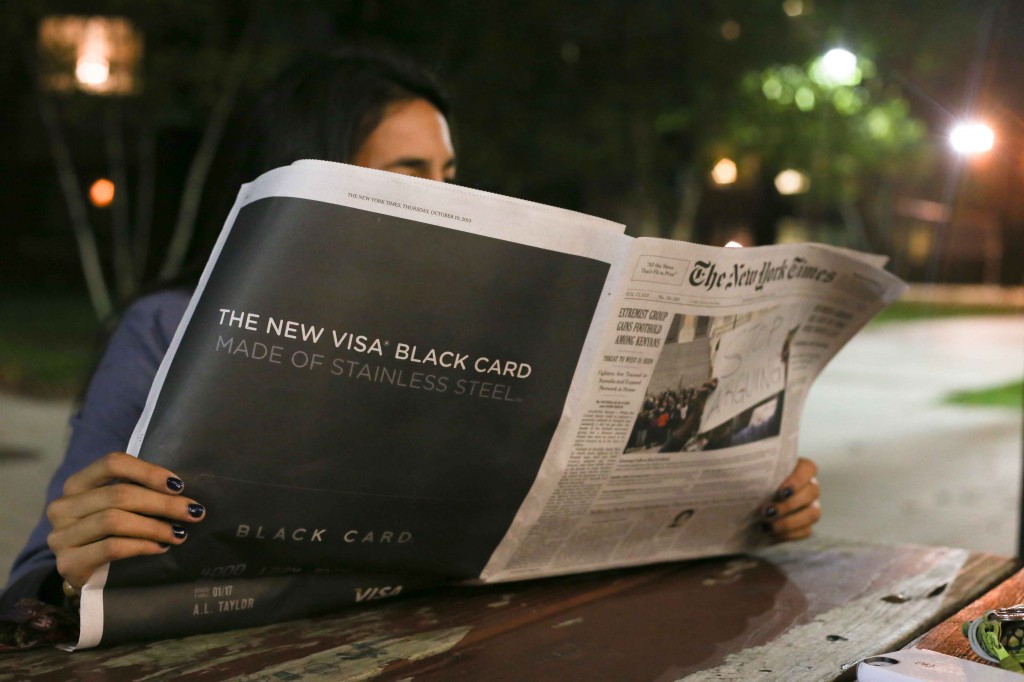
Though it means that student delivery-people will be seeing a reduction in their pay, and one was laid off, The New York Times Readership Program is on sound financial ground for the coming semester.
According to Derrick Conyers, Student Association vice president of Academic Affairs, the original contract with the Times provided what worked out to be $150 per week of funds that would be split between two delivery people. When Conyers wanted to expand the program, requiring the acquisition of a third delivery-person, the same check would have to be split three ways instead of two, decreasing the $75 per week salary to $50.
This pay cut was Conyers’ initial motivation to renegotiate the contract. The new contract with the Times saved $4,200 by reducing the cost of each copy from $.60 to $.50, saving the Office of Academic Affairs enough money to supplement the extra $25 for each of the three employees.
However, in an email sent to Conyers on Oct. 1, Laura Reino, the Education Account Manager for the New York Times, informed Conyers that the extra $.10 per copy was going to be taken from the office of Academic Affairs’s account, and that they would not be sending the monthly check that the office had been counting on.
According to Conyers, once the office realized that the funds were no longer available, the third employee was laid off, however, she was placed in a job at the Career Development Center helping students with their resumes. According to Conyers, this is the highest paid student position at the CDC.
The new contract allowed for the SA to pay delivery people directly, instead of going through the Times, and the two remaining delivery people are still facing a reduced salary.
Eric Bieniek, a Times delivery person and a senior majoring in psychology, said that the pay cut is not ideal, but it’s worth keeping the program running.
“I understand that the program has less money now, and that the pay drop was necessary,” Bieniek wrote in an email. “It does suck that we won’t be getting paid the $75/week we were originally supposed to be paid though.”
Last year Aaron Ricks, former vice president for academic affairs (VPAA), did not have stable funding for the program and had to gather funds on a semester-by-semester basis. With the addition of about one dollar to the Student Activity fee — which was voted on by students — and the renegotiation of the contract, the program is secure for the next few semesters.
“The New York Times Readership Program has never been in a more stable position,” said Bryan Delacruz, policy and research director to the VPAA and a senior majoring in philosophy, politics and law. “From the addition to the Student Activity fee to the negotiation of the contract, we are only about $2,000 down for the rest of the year. That’s also before any fundraising.”
Included in the new contract with the Times is a change from one large fee per semester to two separate payments.
“The old contract required one lump sum fee to The New York Times for the cost of them to deliver here, payroll for the delivery-people on campus and the cost of the papers themselves,” Delacruz said. “Now we pay The New York Times just for the cost of their delivery and the papers themselves, then we choose what to pay our delivery-people on campus.”
The returns on newspapers, meaning the extra copies that are shipped back to the Times facilities, are down 80 to 90 percent from last year. With a new location in the University Union, the program is also reaching out to off-campus students who commute via the buses.
“It seems to be a hit among students because I never have papers left over at my stops. Personally, I do pick up a paper everyday and take a read,” Bieniek wrote. “It would be a shame if such a great program had to be canceled or cut back because of lack of funds.”
The readership program also offers students a 24-hour online subscription to the Times. But this option has remained unpopular, Delacruz said.
“However, having The New York Times physical copies encourages students to become more socially informed by making it easy for them to pick it up and read it throughout the day, while also being reminded of it by seeing it in a familiar and accessible location each day,” Delacruz said.
Gillian Goldhagen, a sophomore majoring in geophysics, said that the paper copy is preferable to the online version.
“I prefer the paper version of the Times, reading on the computer too long gives me headaches,” Goldhagen said. “It is much easier to grab the paper — if it was just the online version I probably wouldn’t take the time the go to the website and plug in a username. The paper is much more compatible.”
Eric Rosner, a junior majoring in accounting, enjoys picking up a paper with his coffee every morning.
“I think it’s useful and nice to have something to read on campus,” Rosner said. “Without it I wouldn’t have any clue what was going on in the world. It helps to keep me up to date.”
Editor’s Note: Geoffrey Wilson, a delivery-person for the Times program and an assistant news editor for Pipe Dream, did not contribute to the writing or reporting of this article.


